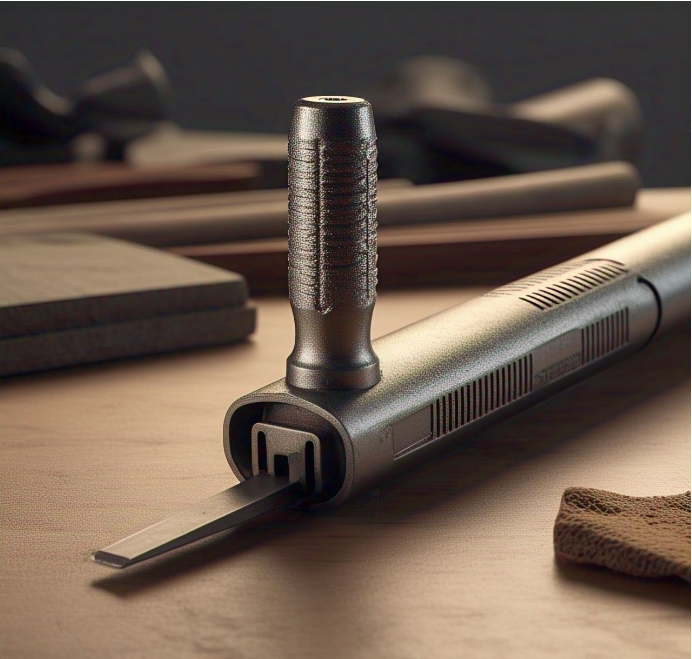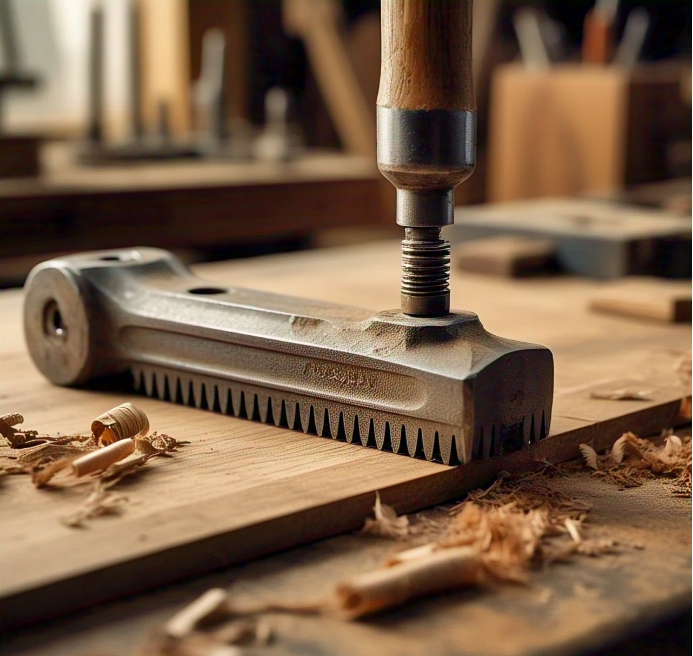A File Tool is a must-have for anyone who loves working with wood, metal, or even plastic. It helps smooth rough edges, shape materials, and create fine details in your projects. Whether you’re a woodworker, a metal artist, or a DIY enthusiast, having the right file tool makes your job easier and gives your work a professional touch.
There are many types of file tools, each designed for a specific task. Some are great for shaping, while others help with smoothing or sharpening. Knowing which file tool to use can save you time and effort. In this guide, we’ll explore different types of file tools, their uses, and how to choose the right one for your project.
Contents
- 1 What Is a File Tool and Why Do You Need One?
- 2 Types of File Tools and Their Uses
- 3 Choosing the Right File Tool for Your Project
- 4 How to Use a File Tool Properly (Beginner’s Guide)
- 5 File Tool Maintenance: How to Keep Your Files Sharp and Effective
- 6 Common Mistakes to Avoid When Using a File Tool
- 7 File Tool vs. Sandpaper: When to Use Each One
- 8 Best File Tools for Woodworking, Metalwork, and DIY Projects
- 9 Where to Buy Quality File Tools and What to Look For
- 10 How to Sharpen and Restore a Dull File Tool
- 11 Safety Tips When Using a File Tool
- 12 How to Remove Rust from an Old File Tool
- 13 Conclusion
- 14 FAQs
What Is a File Tool and Why Do You Need One?
A file tool is a simple yet powerful hand tool used to shape, smooth, and refine materials like wood, metal, and plastic. It has a hard surface with tiny cutting edges that remove small amounts of material with each stroke. Whether you’re a professional craftsman or a DIY enthusiast, this tool is essential for perfecting your projects.
Many people think of a file tool only as a smoothing device, but it does much more. It helps in sharpening, enlarging holes, and creating fine details on different materials. If you want your work to look neat and professional, using the right file can make a huge difference.
Different file tools are designed for different tasks. Some are made for heavy material removal, while others are best for delicate shaping. Knowing which type to use will improve your efficiency and help you get better results.
Types of File Tools and Their Uses
Flat File Tool: A Must-Have for Every Toolbox
A flat file is one of the most commonly used file tools. It has a rectangular shape and flat surfaces on both sides, making it ideal for general-purpose filing.
- This tool is great for smoothing large flat surfaces.
- It helps remove excess material quickly and evenly.
- Woodworkers and metalworkers use it for shaping edges and flattening rough spots.
- A flat file is useful in sharpening tools like knives and saw blades.
Round File Tool: Perfect for Circular Shapes and Openings
A round file has a cylindrical shape, making it the best choice for enlarging holes and creating smooth curves.
- It helps in refining round edges and shaping curved surfaces.
- Ideal for cleaning up holes in wood, plastic, or soft metal.
- Metalworkers use it for adjusting pipe fittings and other round objects.
- It’s also handy for sharpening circular saw blades.
Triangle File Tool: Best for Sharp Angles and Fine Details
A triangle file has three sides, making it perfect for filing tight angles and corners.
- Best for sharpening saw teeth and trimming sharp edges.
- Used for refining grooves and notches in wood and metal.
- Helps in creating precise cuts and fine details in crafting.
- A must-have for jewelers and metal engravers.
Choosing the Right File Tool for Your Project
Picking the right file tool depends on the material you’re working with and the task you need to complete. Using the wrong one can damage your project or make the job harder.
For large surfaces, a flat file works best. If you need to smooth out a round hole, a round file is the right choice. For detailed and sharp edges, a triangle file is more effective. Needle files are useful for delicate and small-scale projects.
It’s important to consider the coarseness of the file as well. A rough file removes material quickly, while a fine file provides a smooth finish. Choosing wisely will give you the best results.
How to Use a File Tool Properly (Beginner’s Guide)
Using a file tool correctly ensures efficiency and prevents damage to both your tool and material. Here are some simple steps to follow:
- Hold the file with a firm grip. One hand should be on the handle, and the other should guide the tip.
- Push the file forward. Files work best in one direction rather than back and forth.
- Apply even pressure. Pressing too hard can cause uneven results or damage the file.
- Use the whole length of the file. This helps in smooth and even filing.
- Keep your file clean. Use a wire brush to remove clogged material from the teeth.
By following these steps, you can work efficiently and extend the life of your tool.
File Tool Maintenance: How to Keep Your Files Sharp and Effective

A well-maintained file tool lasts longer and works better. If your file becomes dull, it won’t shape or smooth surfaces properly.
Best Practices for File Tool Care
- Clean after each use with a wire brush to remove debris.
- Store in a dry place to prevent rust and corrosion.
- Use chalk or oil to reduce clogging when filing soft metals.
- Avoid dropping your file as this can dull the edges.
Taking care of your file tools ensures they stay sharp and effective for a long time.
Common Mistakes to Avoid When Using a File Tool
Many beginners make simple mistakes that reduce the efficiency of their file tool. Avoiding these errors will help you achieve better results.
- Using too much force: A light and steady hand works best.
- Filing in both directions: Always push forward for a smoother finish.
- Not cleaning the file: Clogged teeth reduce effectiveness.
- Using the wrong file: Always match the file type to the task.
Avoiding these mistakes will improve your filing technique and make your work easier.
File Tool vs. Sandpaper: When to Use Each One
Both file tools and sandpaper help in smoothing surfaces, but they serve different purposes.
When to Use a File Tool:
- When you need to remove a large amount of material.
- For shaping and sharpening metal, wood, or plastic.
- When working with harder materials.
When to Use Sandpaper:
- For finishing and polishing surfaces.
- When working with delicate or soft materials.
- For minor smoothing after using a file tool.
Knowing when to use each tool will help you get the best results.
Best File Tools for Woodworking, Metalwork, and DIY Projects
Choosing the right file tool depends on your project. Here are some of the best ones:
- Flat file: Best for woodworking and general use.
- Round file: Perfect for metalwork and enlarging holes.
- Triangle file: Great for sharp corners and detailed work.
- Half-round file: A versatile option for various projects.
- Needle files: Ideal for fine and delicate crafting.
Having these in your toolbox ensures you’re ready for any task.
Where to Buy Quality File Tools and What to Look For
Good file tools last longer and perform better. When buying, consider these factors:
- Material quality: High-carbon steel files last the longest.
- Coarseness level: Choose based on your filing needs.
- Handle comfort: A comfortable grip makes work easier.
- Brand reputation: Trusted brands offer better durability.
You can find quality file tools at hardware stores, online marketplaces, and specialty tool shops.
How to Sharpen and Restore a Dull File Tool
Over time, a file tool can become dull, making it less effective. Instead of replacing it, you can sharpen and restore it for better performance.
Steps to Restore a File Tool:
- Clean the file: Use a wire brush to remove any debris or material stuck in the teeth.
- Soak in acid: A mixture of white vinegar or muriatic acid can help remove rust and restore sharpness.
- Brush off rust: After soaking, scrub the file with a wire brush and rinse it well.
- Dry and oil the file: Wipe it dry completely and apply a thin layer of oil to prevent rust.
Restoring a file tool helps extend its life and keeps it working like new.
Safety Tips When Using a File Tool
Using a file tool incorrectly can lead to accidents or damage to your project. Follow these safety tips to protect yourself.
Important File Tool Safety Tips:
- Use a handle: Never use a file without a proper handle to prevent slipping.
- Wear safety gear: Use gloves and safety glasses to protect your hands and eyes.
- File in one direction: Avoid back-and-forth movements, as this can damage the tool.
- Secure your workpiece: Make sure the object you’re filing is held in place with clamps or a vise.
Practicing safety while using a file tool ensures a smooth and injury-free experience.
How to Remove Rust from an Old File Tool

If your file tool is covered in rust, don’t throw it away! You can restore it using simple methods.
Ways to Remove Rust from a File Tool:
- Vinegar soak: Submerge the file in white vinegar for a few hours, then scrub it clean.
- Baking soda paste: Apply a paste of baking soda and water, let it sit, then scrub off the rust.
- Lemon and salt: Sprinkle salt on the file, then rub with a lemon to loosen rust.
- Wire brush or sandpaper: Manually scrub away light rust spots.
Regular maintenance will prevent rust from forming in the future.
Conclusion
A file tool is a simple but powerful tool that helps shape, smooth, and sharpen materials like wood, metal, and plastic. Whether you are a beginner or an expert, the right file makes your work easier and more professional. Choosing the correct file for your project saves time and gives you better results.
Taking care of your file tool is important. Clean it after every use, store it properly, and sharpen it when needed. A well-maintained tool lasts longer and works better. With the right knowledge and tools, you can create amazing projects with smooth and perfect finishes!
FAQs
Q: What is a file tool used for?
A: A file tool is used for shaping, smoothing, and sharpening wood, metal, and plastic. It helps remove rough edges and refine details.
Q: How do I choose the right file tool?
A: Choose based on your project. A flat file is good for large surfaces, a round file helps with holes, and a triangle file is great for sharp edges.
Q: How do I keep my file tool sharp?
A: Clean it after each use, store it in a dry place, and sharpen it with an acid soak or a wire brush when it becomes dull.
Q: Can a file tool rust?
A: Yes, if left in a damp place. To prevent rust, store it in a dry area and apply a little oil to the surface.
Q: Can I use a file tool on plastic?
A: Yes, but use a fine-tooth file to avoid damaging the plastic. Work gently for the best results.
